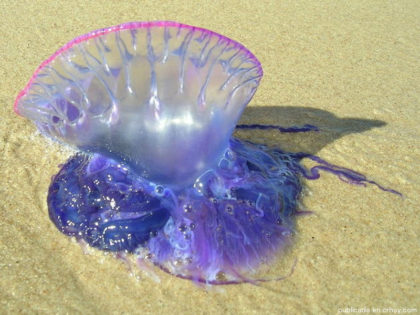
If you are visiting the Caribbean coast, be careful, since the Center for Research in Marine Sciences and Limnology (CIMAR) of the University of Costa Rica issued an alert for the presence of these animals in this area.
How does it affect the human being? According to a statement from CIMAR, it can cause irritation, burns and severe pain in the affected area. They are invertebrate animals, related to jellyfish and corals. They stand out for their blue and purple colors.
Jeffrey Sibaja Cordero, researcher from CIMAR, explained that “these animals trap prey and defend themselves from predators with cells that pull a venomous harpoon containing toxins and when they touch the skin of some other organism, these harpoons inject the poison.”
Why are they called Portuguese Man’o war? Its name is due to being observed at sea in groups.
They are found both in the Pacific Ocean and in the Atlantic. They arrive at the beaches because of the waves and the wind.
They are floating on the sea, but if the wind or waves push them towards the beach they will run into people who are bathing and the animals will not know what they are crashing and react by throwing these toxins as a defense mechanism,”
explained Sibaja.
The expert commented that each specimen is a colony of several individuals that live together floating in the sea and each one fulfills a specific biological function. They are gelatinous and feed on small fish and other invertebrates such as crustaceans.
The main recommendation of the expert is not to approach or touch the animal, whether it is alive or dead.